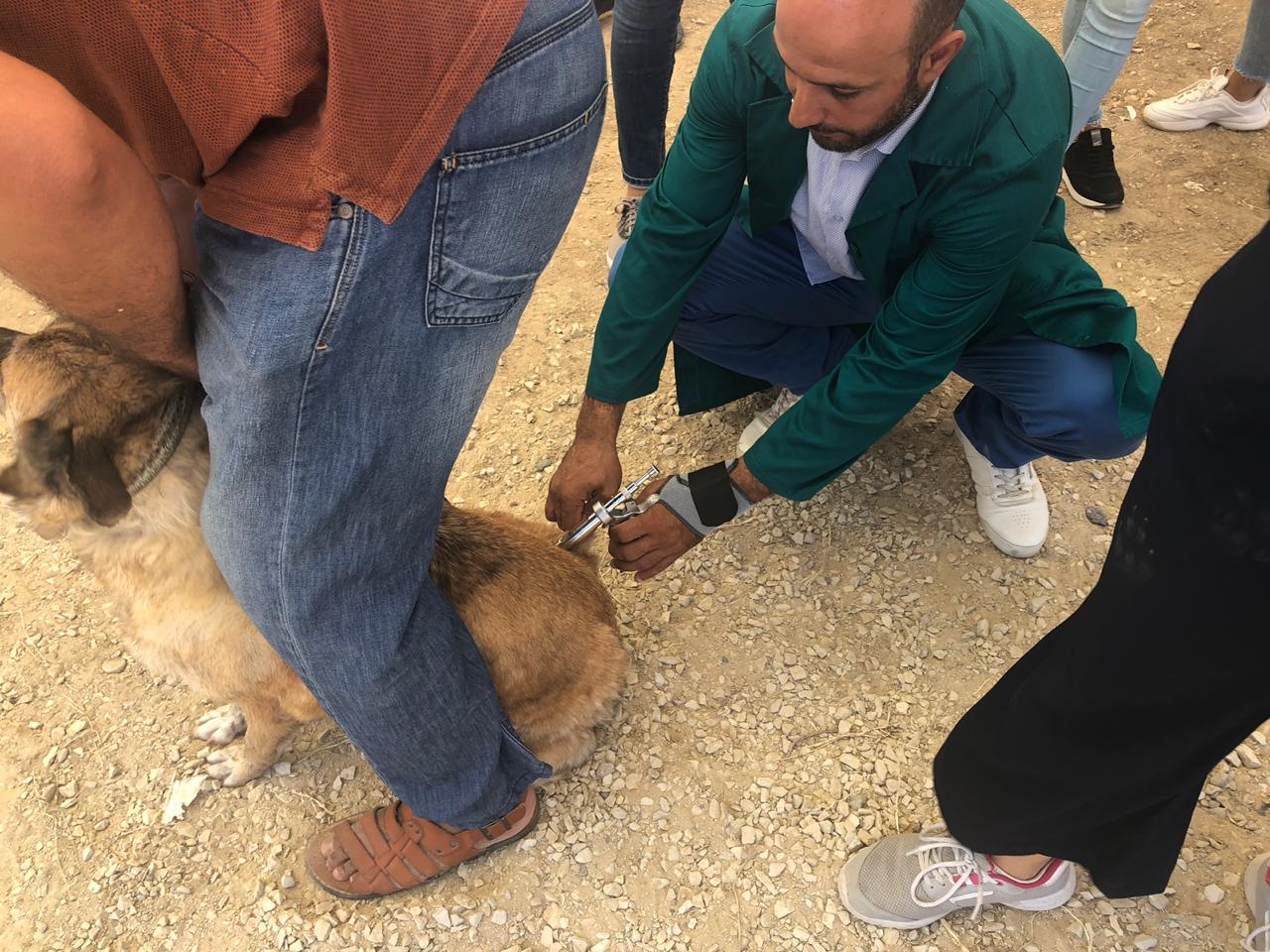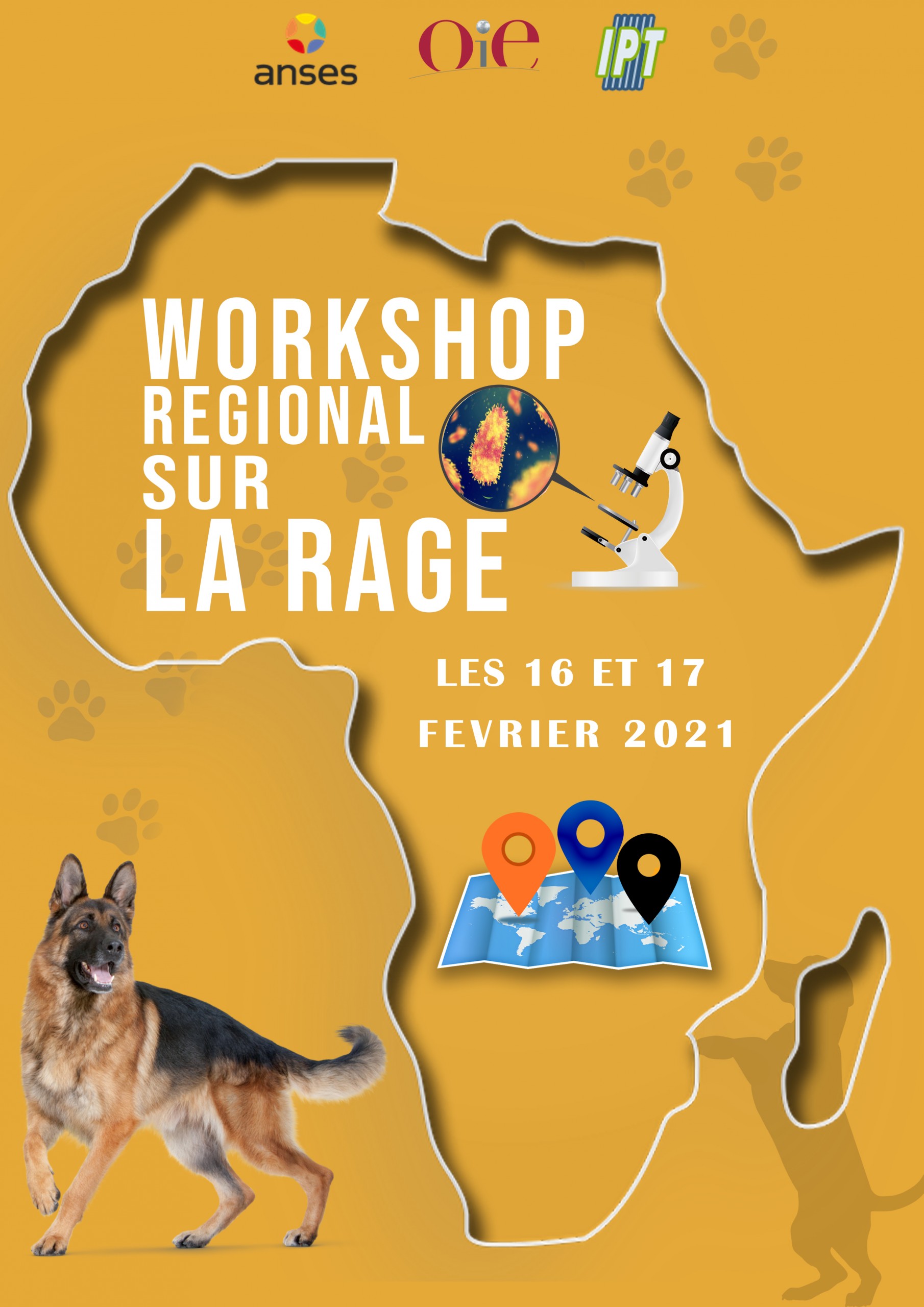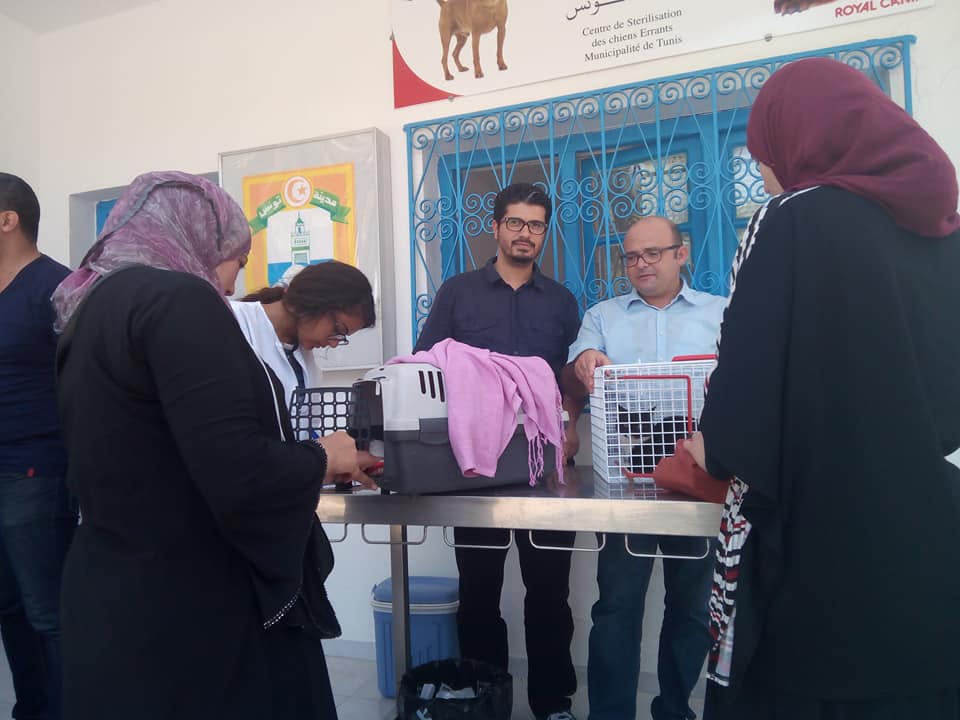


As part of the OIE twinning project between the rabies and wildlife laboratory of ANSES Nancy (France) and the rabies laboratory of the Institut Pasteur of Tunis, three workshops were planned for the launch of the project and for a discussion on the state of canine vaccination and rabies surveillance in African countries (mainly Maghreb and sub-Saharan Africa) (Activities 3.1, 7.1 and 7.2 of the project). With the context of the Covid19 pandemic, it was decided to hold an online meeting relating these various aspects. The meeting brought together 55 participants from more than 15 countries over a period of 1.5 days, on February 16 and 17, 2021, and was held in French and in English.
The objectives of this webinar were to promote the collaboration of actors involved in the control of canine rabies in the region in order to collectively contribute to the elimination of canine rabies, by harmonizing dog vaccination strategies between countries and by creating a network of laboratories working together to share detection tools and new developments for disease surveillance. It was also a question of informing the African countries of this project and of the possibility of participating in an inter-laboratory test which will be organized in this context. OIE, WHO, PAHO and GARC personalities as well as international experts actively participated in the workshop by giving presentations, including experts from the OIE rabies reference laboratory of South Africa and from the FAO rabies reference laboratory from Italy. Representatives of several countries in the region (Algeria, Burkina Faso, Morocco, Mauritania, Niger, Senegal and Tunisia) presented the epidemiological data of rabies surveillance, control methods, in particular elements on mass rabies vaccination of dogs, identified constraints and perspectives. During this webinar, a number of subjects relating more particularly to the control and surveillance of canine rabies were discussed: disease surveillance, most often insufficient in time and space; mass vaccination of dogs suggesting vaccination coverage rates below the required 70% rate; knowledge of the structure and densities of dog populations which is essential to better conduct and evaluate vaccination campaigns; virus detection tools and proficiency testing organization for rabies diagnosis.
PDF - 2.84MB
PDF - 3.88MB
PDF - 2.59MB
PDF - 2.56MB




